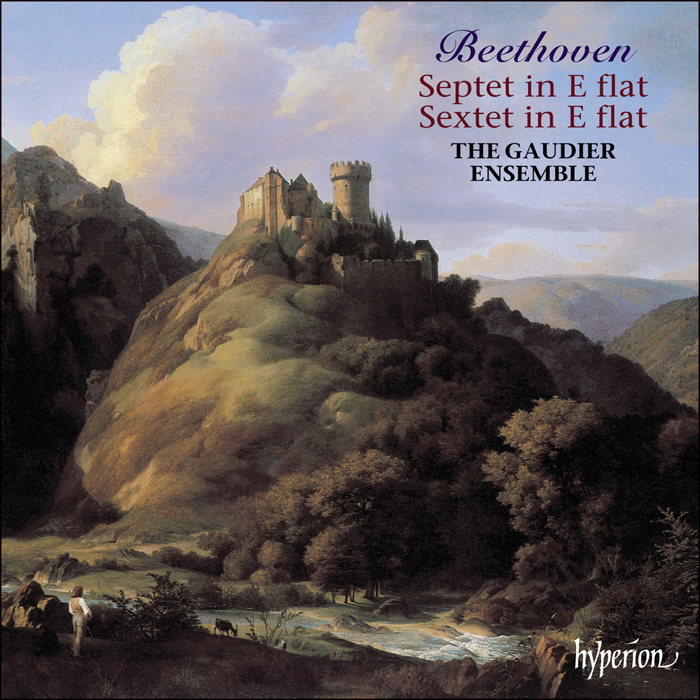Beethoven: Septet & Sextet
The Gaudier Ensemble
CDA66513
Until the Classical period most chamber music was written for stringed instruments. True, a repertory of solos and trios was developed earlier for the recorder and its successor, the transverse flute. But, in general, the louder wind and brass instruments were confined to the orchestra and orchestral music until the second half of the eighteenth century, when rapid advances in their manufacture and playing techniques made them suitable for refined chamber music. The oboe, clarinet, horn and bassoon began to be used in duos, trios, quartets and quintets with strings and/or piano. Wind ensembles, hitherto the preserve of military bands or of lowly town musicians, began to be taken seriously by the best composers. Mozart and Haydn wrote a good deal of Harmoniemusik, as it was known in Germany, and Mozart’s wind serenades K361, K375 and K388 are profound masterpieces, worthy to stand beside his string quartets. Most important in the present context, Classical composers wrote serenades and divertimenti in an idiom midway between orchestral music and true chamber music: they are usually written like orchestral pieces with pairs of horns and/or oboes with strings, yet they tend to require the sort of virtuosity found in chamber music rather than orchestral string parts, and it seems that such works were normally played with single strings. For instance, Mozart’s Ein musikalischer Spass (‘A Musical Joke’, K522) is scored in a seemingly orchestral fashion for strings and two horns, yet the original edition has an amusing engraving depicting the piece being performed by a sextet, with a double bass instead of a cello.

